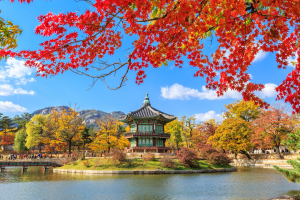Top 6 North Korea Culture, Customs and Etiquette
North Korea remains one of the most mysterious countries in the world. The North Korean state is said to limit the import of Western culture into the country. ... read more...But in recent years, it seems that the door of North Korean culture is opening to interact with the outside world. Besides attractive tourist attractions, Korean culture with many interesting things and a little "different" is also very attractive to visitors. This article is a list of the best North Korea culture, customs and etiquette that you should not miss.
-
The very first thing in this list of North Korea culture, customs and etiquette is "Socializing". Formal greetings and introductions are common. Men commonly exchange handshakes, but a bow is more common. A person of lower status always bows until the other person offers a handshake or returns the bow. When Korean men shake hands, the right hand is extended, and the left hand is often supported at the wrist to show deference, and the head is slightly bowed. When two women meet, they typically extend their arms and grasp each other's hands. Adults are always bowed to by children, who wave or bow to one another.
When greeting someone, the most common phrase is Anyonghaseyo? (literally, "Are you at peace?"), which is the equivalent of "How are you?" Because the Korean language has various levels of formality, this and any other greeting will differ depending on who is involved. Anyong?, for example, is used with children, whereas Anyonghashimnikka? is used with superiors. The words all mean the same thing, but the different endings indicate different levels of respect. It is customary to inquire about superiors' health and parents when greeting them. When greeting subordinates, questions about their spouses and children are asked.
North Koreans normally do not visit one another unannounced, and arranged social visits are infrequent. Generally, people visit relatives for the lunar New Year or Parents’ Day, but not so often otherwise. Unless special business calls for it, a superior never visits a subordinate.
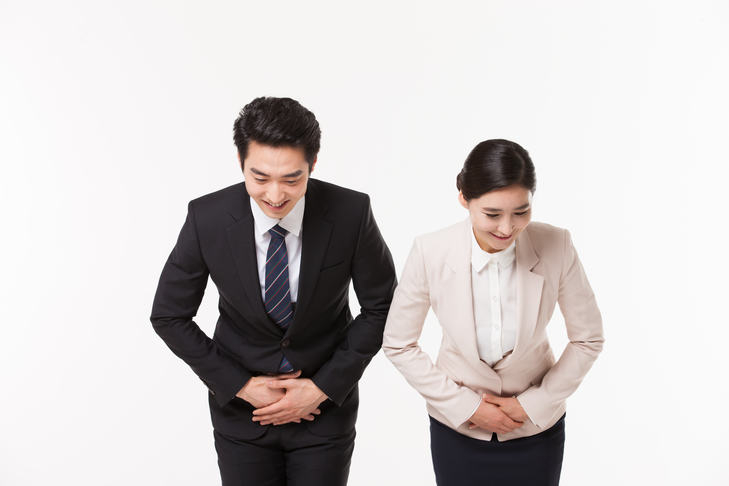
moneycontrol.com 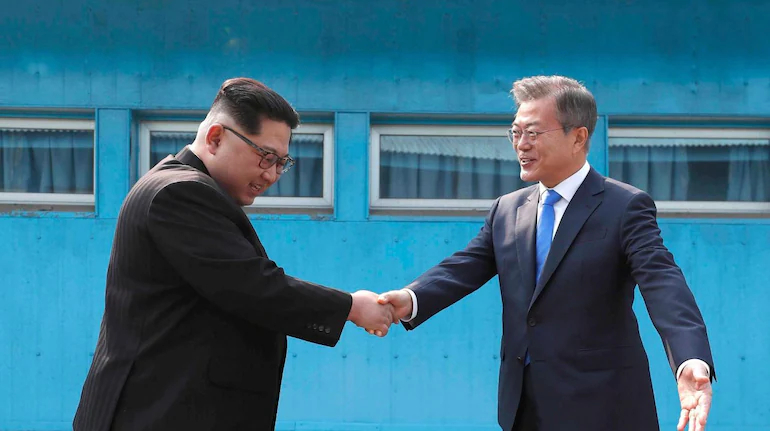
moneycontrol.com -
Also a two-part outfit consisting of: jeogori (shirt or jacket) and chima (dress wrapped around the body) for women or baji (long pants) for men, but instead called 'Hanbok' as in Korea' Hanbok', the Koreans call it 'Choson-ot'. However, if Koreans only wear them for events, formal or semi-formal occasions such as festivals, celebrations, and solemn ceremonies, then when traveling to North Korea, there will be no It's not unusual to see women wearing traditional clothes every day, while the traditional Ao Dai is usually reserved for special occasions like weddings or parties.
In particular, if the Chinese cheongsam or the Vietnamese ao dai usually has only one style, the Choson-ot is designed according to the purpose, the daily wear is quite simple with gentle colors but the ceremonial dress is different. very cumbersome with many textures and makeup, as well as accompanying accessories will also be more complicated. From there, it shows some of the interesting in Korean culture. Furthermore, jeans are seen as a big "no" in North Korea. So, it will be historical if you use this costume when you come here to travel.
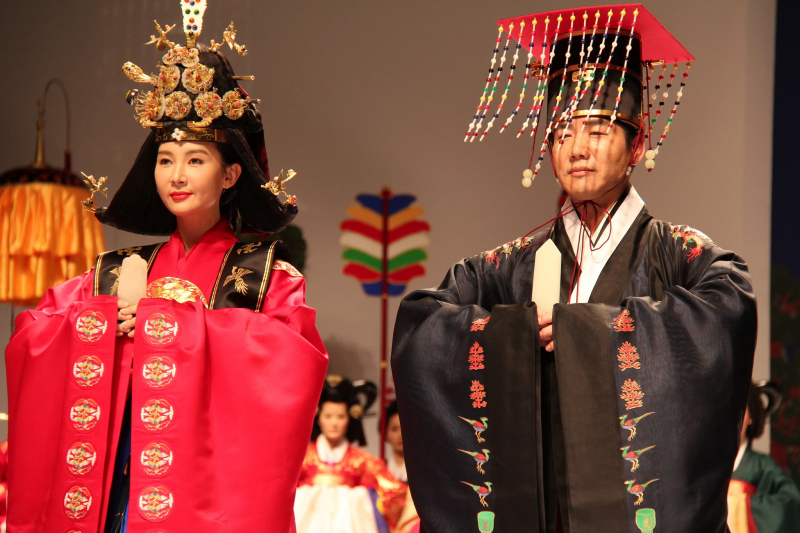
phongchongthientai.mard.gov.vn 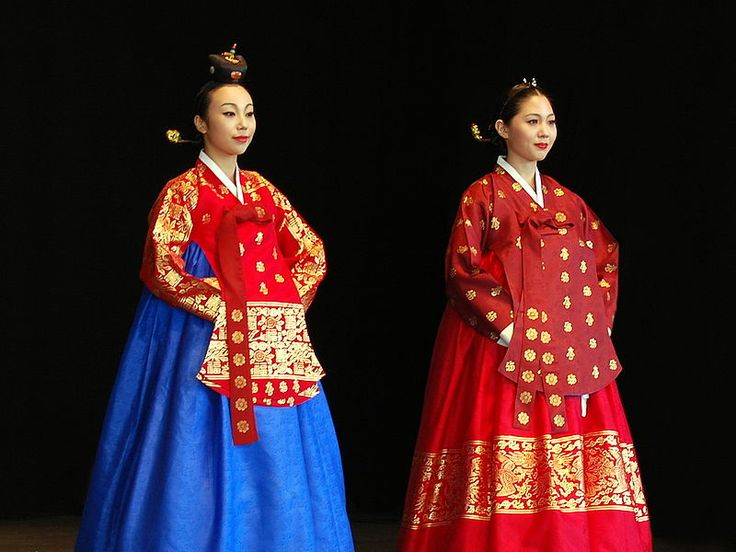
pinterest.com/pin/27936460159471499/ -
The production of literature and art in North Korea is completely controlled by the state: from ideological lines, forms of presentation, availability to dissemination to the public. However, this does not mean that the Korean people are poor in art, but on the contrary, there are quite a lot of rich art genres and distinct fashions that appear and change continuously over time.
Movies in North Korea are popular entertainment for the general public, while other specialized genres such as circuses or concerts are only available to foreign visitors, national festivals and individuals are chosen to enjoy (due to their revolutionary heritage or recognition as people with meritorious services to the revolution). This leads to an interesting cultural feature of North Korea where the people are extremely fond of singing, dancing and music, especially concerts or circus shows. If they have the opportunity to participate, they will feel extremely happy and proud.
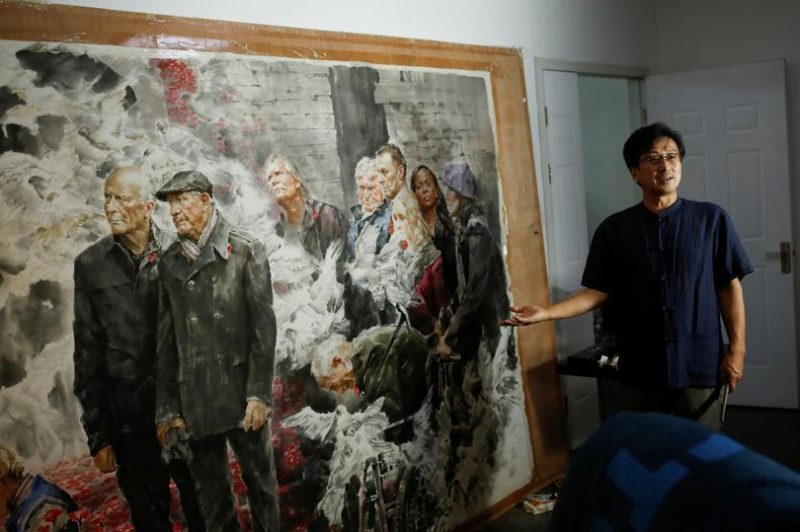
nytimes.com 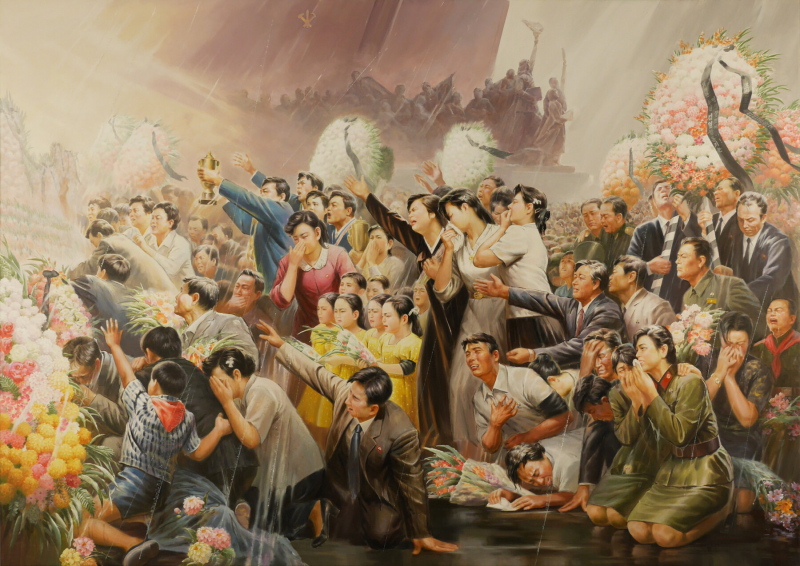
widewalls.ch -
Marriage is also an interesting thing you should know when learning North Korea culture, customs and etiquette. In a modern society, where marriage is free and equality is always put on the forefront, with Korean culture in marriage, the compatibility of class origin is what is valued. For example, if a man comes from the family of a high-ranking party member and a woman from a family with no equivalent socio-political status, the marriage between the two will not be socially acceptable. favorable. Or if a man comes from a family repatriated from Japan in the post-war period and a woman comes from a "native" North Korean family, then a marriage between the two would also be very expensive. difficult.
Usually, newlyweds will only conduct a small ceremony and then invite close friends, neighbors and family members to take pictures together, but there is no big party or no honeymoon. . Even wedding dresses are made from state-distributed fabrics, so brides of one period will look quite similar. In addition, at weddings in North Korea, cold noodles are a main dish. So there is a very special custom here that if you want to join someone's wedding party you can ask: "when can I eat your cold noodles?" i.e. "when can I join your wedding party?", too interesting isn't it.
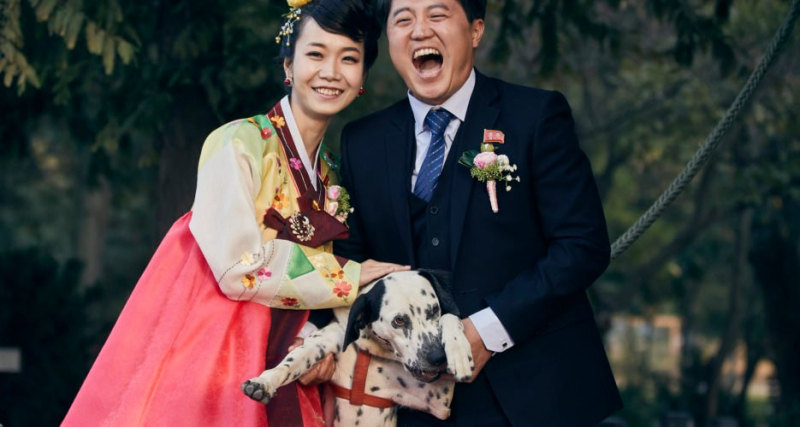
koryostudio.com/blog/wedding/ 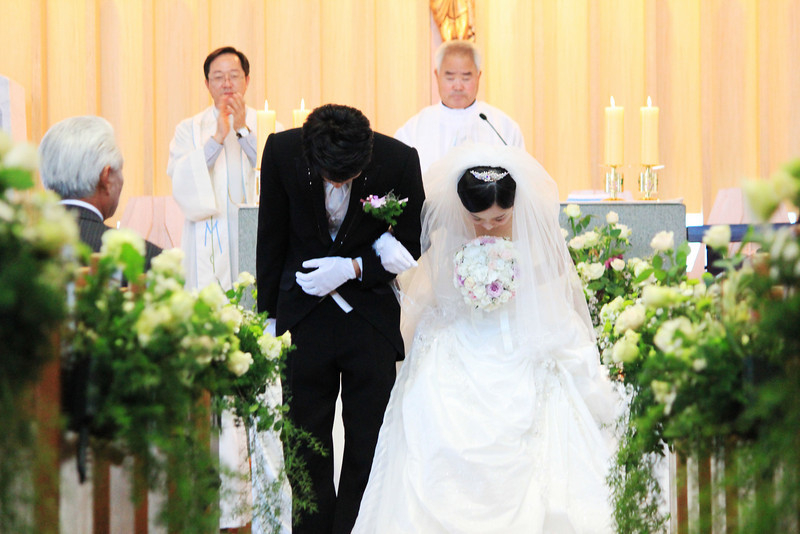
koryostudio.com/blog/wedding/ -
Referring to Korean popular music, if anyone has ever researched or searched only once on the Internet, they will immediately remember the image of 4 young, beautiful girls, wearing trendy performance uniforms and sing exciting songs like K-pop stars (Korea). It is Moranmong, the most popular girl group in North Korea and even has fans abroad.
The establishment of Moranbong can be considered as leader Kim Jong-un's first attempt to "update" popular culture in North Korea as soon as he took power in 2011. Moranbong shows the world a new, never-before-seen side of North Korea in the events they participate in. As in February last year, Moranbong was among the artists sent by North Korea to South Korea to perform the opening ceremony of the Winter Olympics in PyeongChang.
Two months later, on April 1, 2018, Kim Jong-un became an audience of Red Velvet again when this popular Korean girl group brought genuine K-pop songs right in the capital Pyongyang. of North Korea. Among the artists and groups selected for that special occasion are names such as Jo Yong Pil, Yoon Do Hyun, Baek Ji Young, Yoon Sang and Seo Hyun (SNSD).
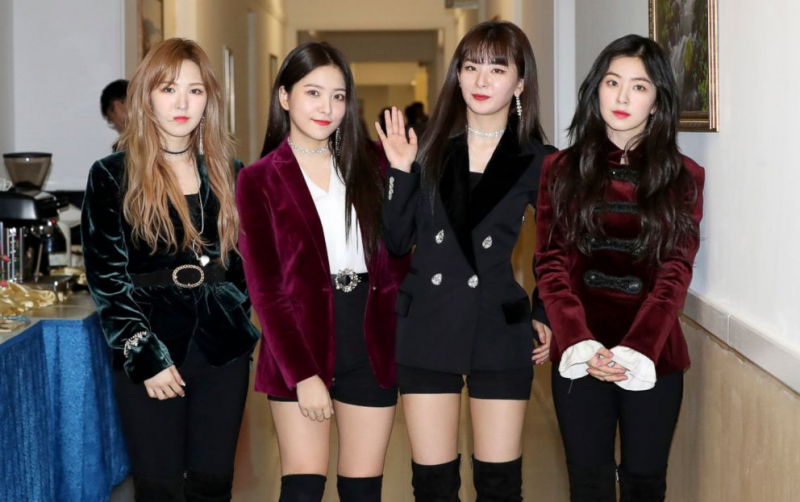
nytimes.com 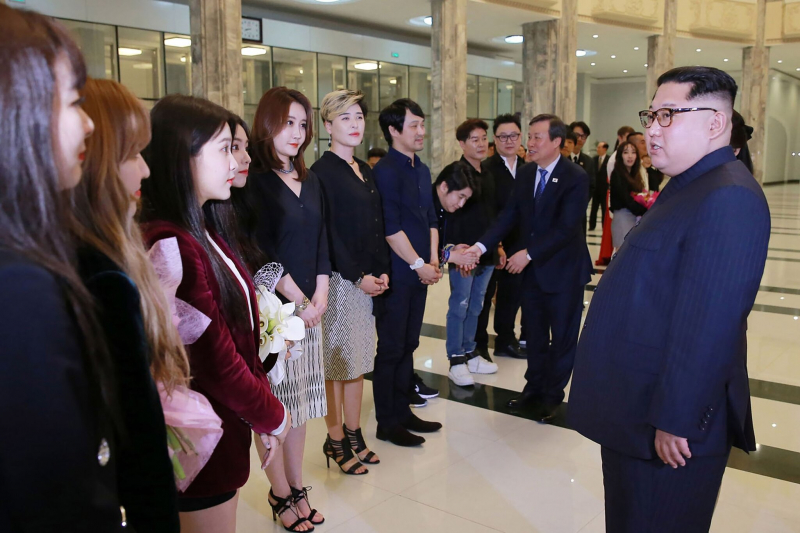
abcnews.go.com -
What most distinguishes North Korean socialism is its leadership, which is based on Kim Il Sung's personality cult. Kim and his family are introduced as role models for men and women, young and old, through the state-engineered education system. Children can recite stories from Kim's childhood by the time they reach kindergarten. North Korean moral ideological education is allegorically organized, with Kim Il Sung and his pedigree as protagonists.
North Korea theoretically allows religion, and visitors may encounter a Buddhist monk or nun. However, religious freedom is extremely limited in North Korea. Tourists may encounter monks and nuns who have no public followers; in fact, they may be loyal followers of the leader. Northern Korea has traditionally had strong Christian centers, and Christianity played an important role in organizing anti-Japanese resistance during the colonial period. Similarly, anti-Japanese resistance strengthened the Ch'ondo religion, which emerged in the nineteenth century as an indigenous Korean religion. In fact, many Ch'ondo leaders were included in the initial state-building of North Korea. Decades of Kim Il Sung worship transformed the religious plurality, though; with the leader's ascendancy, non- Juche ideas came to be regarded as heterodox and dangerous, or as bourgeois and capitalist.
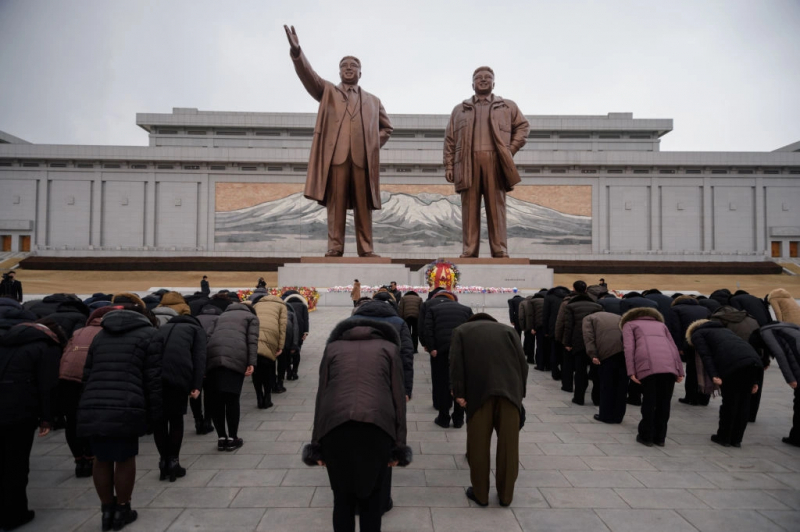
bigthink.com 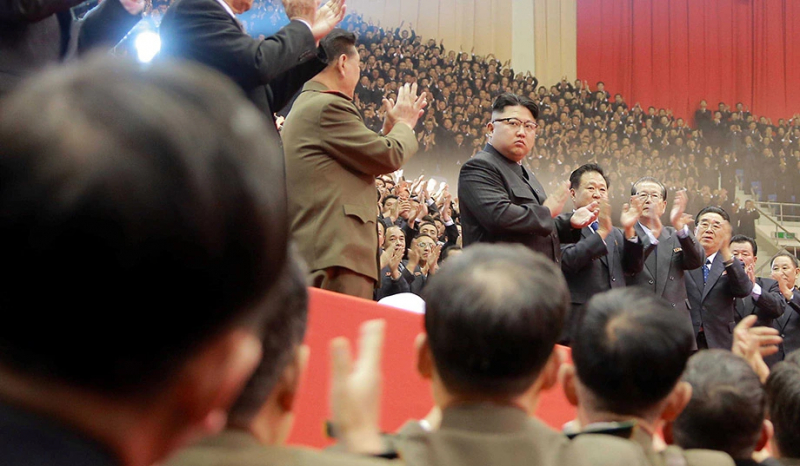
bigthink.com








